
If you’ve been following the avocado’s steady rise to internet fame, I’m sure you’ve seen the viral trend of growing your own avocado tree from the seed or pit of the avocado in your kitchen.
The trick is simple – you just need a glass of water, an avocado seed, some toothpicks, and a warm sunny spot on the windowsill.
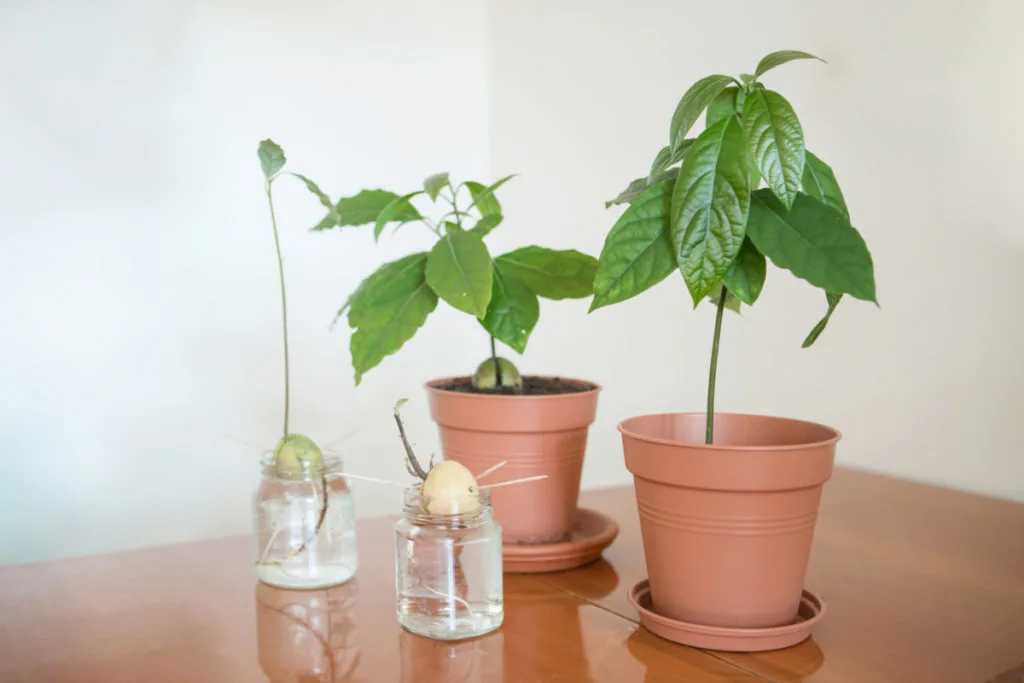
This viral trend is tried and tested, but it’s not the only way to germinate avocado seeds. There are two other methods you can use to grow your own avocado tree.
However, the main thing TikTok trendsetters don’t always tell you, is that growing a tree that might actually produce fruit isn’t as simple as germinating a seed.
The Three Methods
1. Water Method
Water germination is the most famous of the methods. It’s high on the list of fun projects to do with very little effort, using things you already have around your home. The ability to watch your avocado pit split and sprout roots and a stem is part of its allure.
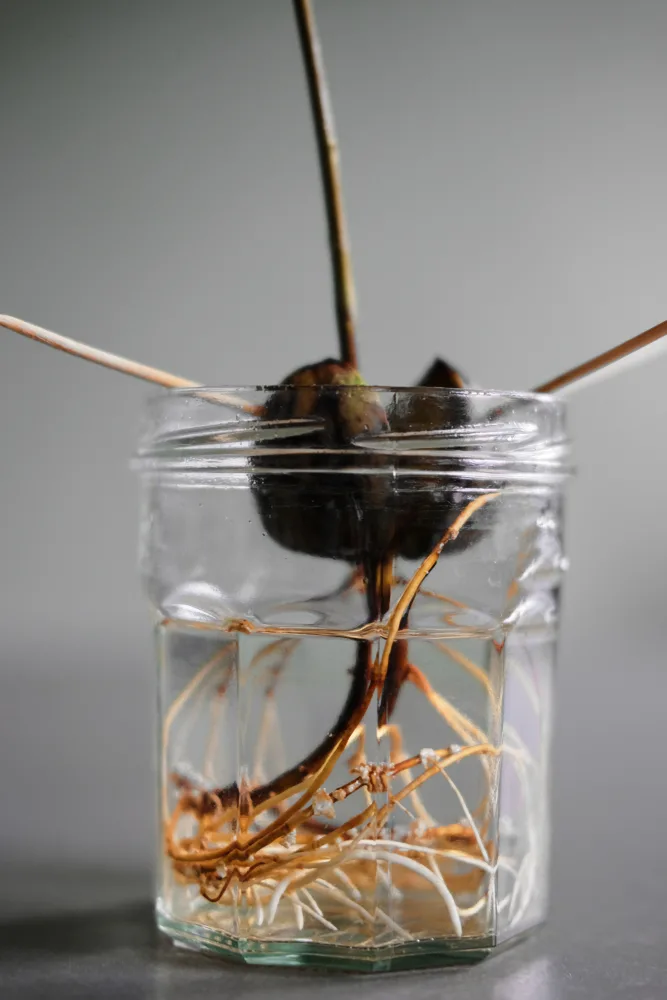
There are a few ways to hop on this water germination train, the most common being using toothpicks. You could also buy germination plates online, or cut bottle tops off – like you would when making a DIY funnel.
But the idea is the same across the board– suspend your avocado seed in a glass of water and watch the magic happen. And by magic, I mean the growth of cute little roots and a stem.
Make sure to wash and dry your avocado seed thoroughly and be sure the broad end of the pit is in the water with the pointed end facing up.
If you’re opting for the toothpick method, stick three around the base of your seed. Position them so only an inch of the pit is suspended in water. Pop your glass in a warm sunny spot and let nature take its course.
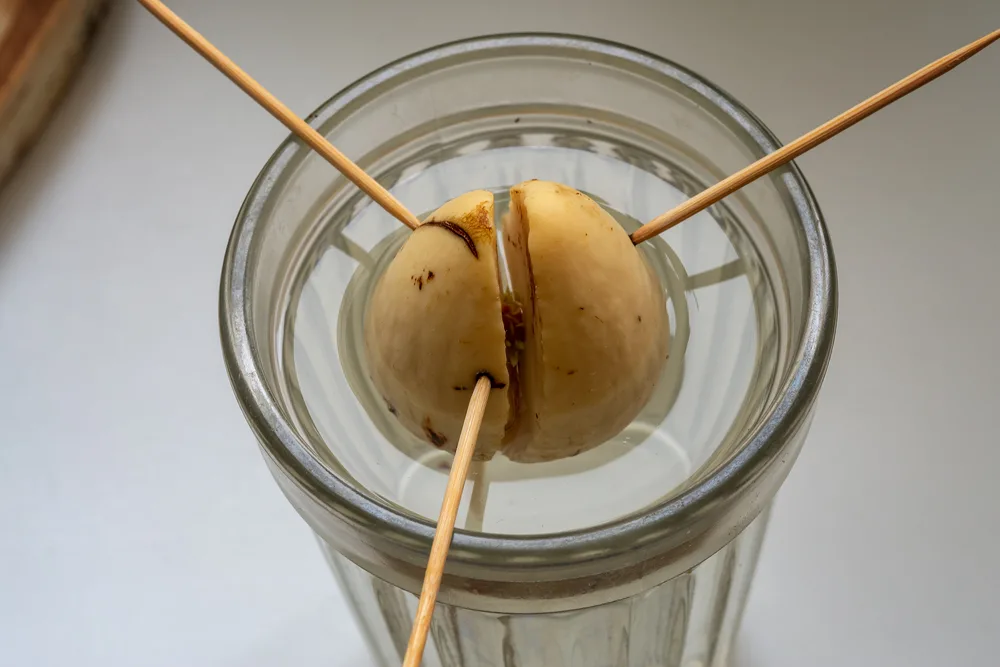
You’ll need to replenish the water supply often due to evaporation. Sometimes replacing the water entirely is necessary, especially if it gets a little cloudy.
As with any cool hobby or trend, there are often gadgets that make the entire process easier. When it comes to germinating avocado seeds at home, it’s no different. You can purchase special ‘germination plates’ that help prop the seed up. It’s aesthetically pleasing and it reduces evaporation.
In a similar vein, you can create your nifty germination gadget using plastic water bottles. Simply cut off the top of the water bottle, without the lid, as though you’re making a funnel. Pop your germination gadget into the glass, bottleneck down and place your seed into it with the base down. This also somewhat seals the edges of the jar or glass, reducing evaporation.
In a couple of weeks, the seed begins cracking and splitting. A few more after that and your seed should have some healthy little roots and a stem. If your seed hasn’t cracked or produced any roots in about eight weeks, try again with a different seed.
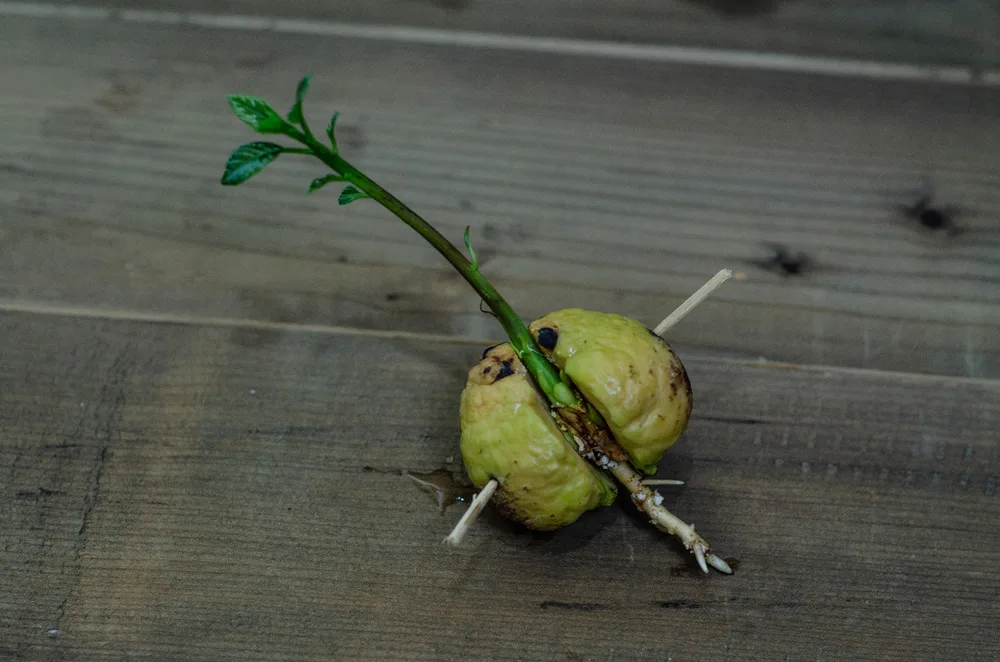
Once your roots are a few inches long, your seed is ready for replanting. Grab a decent-sized pot or dig a hole in your backyard and add some potting soil. A pot on the bigger side with decent drainage is a must.
Remove your seed from the water and whatever gadget you opted for. Pop it in the pot or hole with some soil and cover.
2. The Cupboard Method
If you’re not a fan of having germinating seeds on your windowsills, you could opt for the cupboard method.
Start off by cleaning your seed thoroughly, making sure no flesh sticks to the seed. Next, wrap the squeaky clean seed in a damp paper or tea towel. Make sure it’s moist, but not dripping.
Pop your wrapped avocado seed in a plastic bag (sandwich bags work well) but don’t seal it. Stick it into the cupboard and you should have a germinated avocado seed in a few weeks.
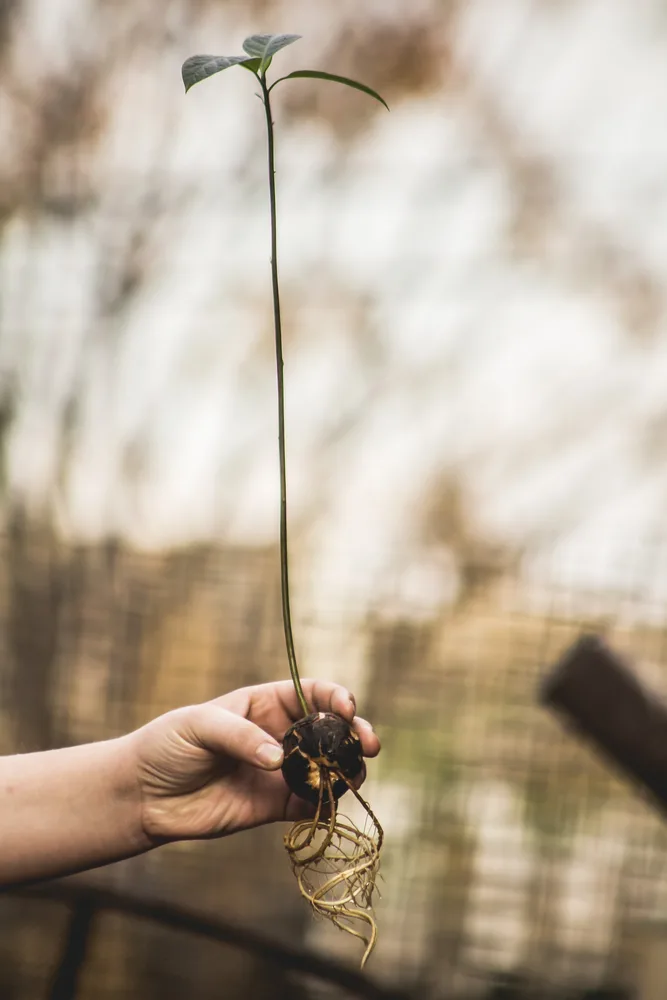
The cupboard method still requires some maintenance – it’s not an ‘out of sight out of mind’ method. The most important thing is that the paper towel stays damp, especially while you wait for your seed to sprout roots.
When your avocado roots are a good three inches long, it’s safe to plant in a pot.
3. The Soil Method
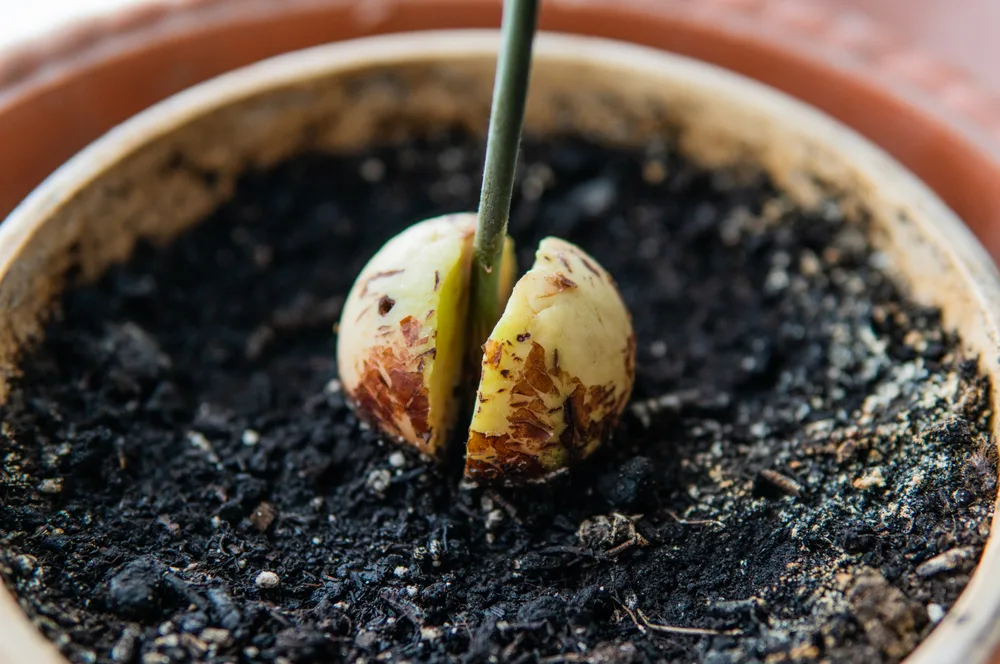
Of course, you can skip straight to sticking your seed into the soil. You can forgo the trendy, viral methods and still get a happy avocado tree. Some even claim that this method is more successful than the other two, and possibly faster.
Prepare some slightly acidic soil and find a pot with good drainage. Add some coconut husk (a great environmentally-friendly alternative to peat moss) and perlite to increase the soil’s aeration. Moisten the soil as much as possible without flooding it, and ensure the excess water has drained before planting.
Now, pop the bottom end of your avo seed into the soil, leaving the top half exposed. Make sure the pot gets plenty of indirect sunlight, and keep the soil moist but not waterlogged. It should take the usual two to eight weeks before the seed begins to crack and sprout roots.
Will it Produce Fruit?

Before we get onto how to care for your blossoming avocado tree, let’s discuss the elephant in the garden.
Will all your hard work bear delicious creamy avocadoes that pair nicely with whole wheat toast and a cup of coffee?
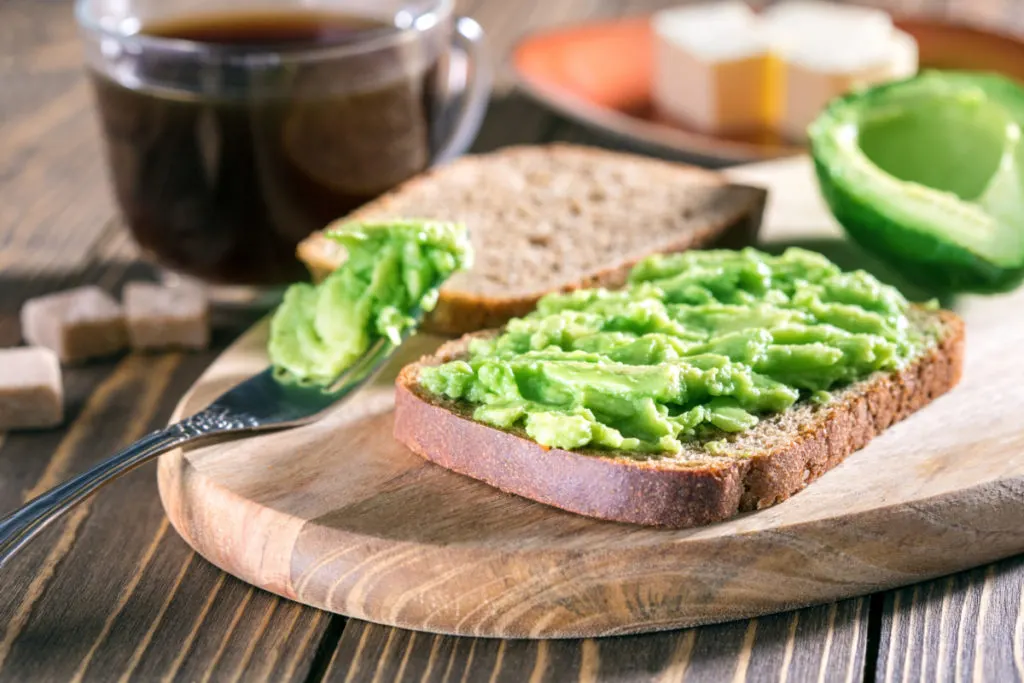
The truth is, the chances of that happening are very slim. And if you are one of the lucky few, it could take anywhere between 5 and 15 years for a tree to mature enough to produce glossy green avocados, and they’ll more than likely be small.
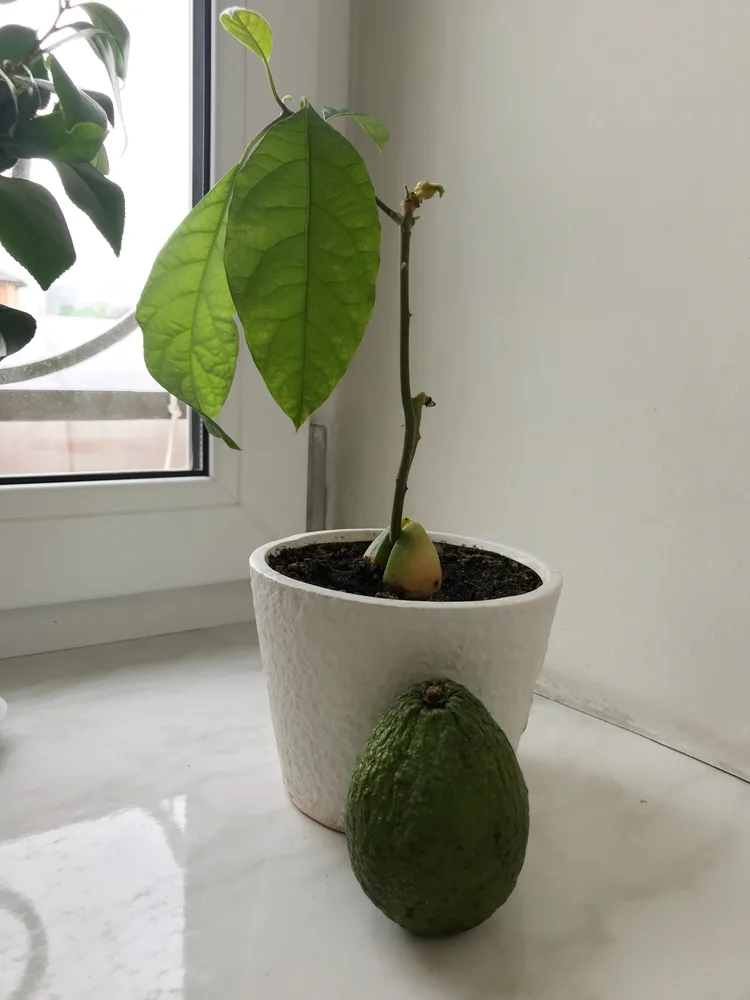
This is because the variety of avocado you’ve purchased (more than likely Hass) won’t grow true to the parent plant.
As avocado cultivars are extensively hybridized, the avocado fruit you may get several years down the line (if you’re lucky) won’t be the original fruit you bought. These trees are also more likely to experience growing problems and struggle with pests and diseases.
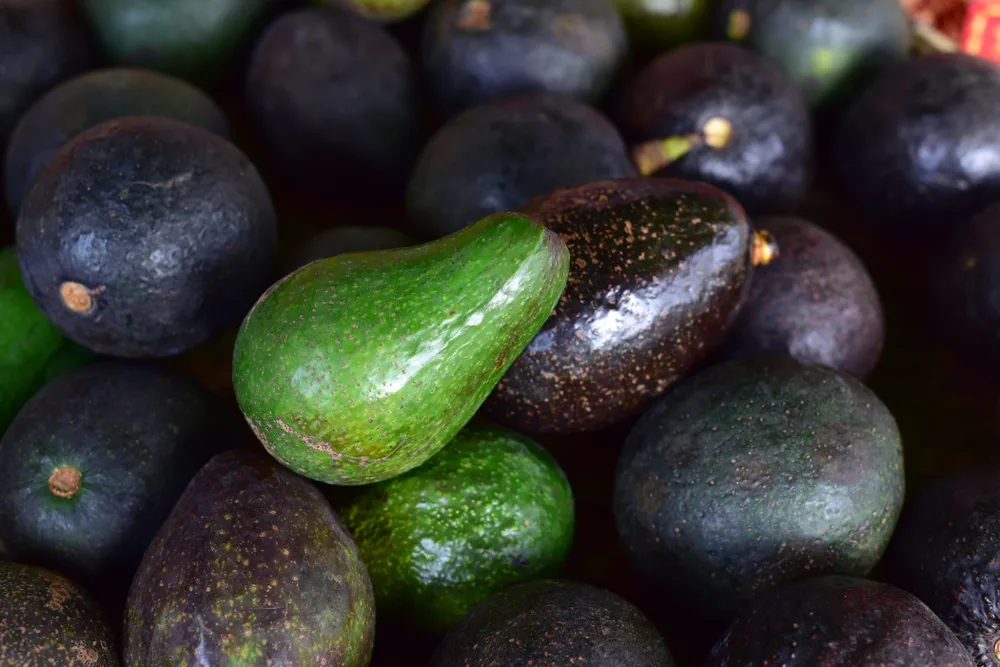
You also need to consider the conditions in which avocado trees thrive. Growing avocado trees is a tricky business. They’re quite fussy about their conditions. Avocado trees love humid and warm environments with plenty of sunlight to soak up.
Over and above that, they’re exceptionally thirsty plants, needing about 15-25 gallons of water a week. They also cannot stand the cold, and some extra precautions may need to be taken during the cooler months to keep your tree healthy and happy.
Caring for your Avocado Tree
While it may take just shy of a decade to even see if your tree will produce fruit, at least you know you’ve got a stunning tree with plenty of ornamental value.
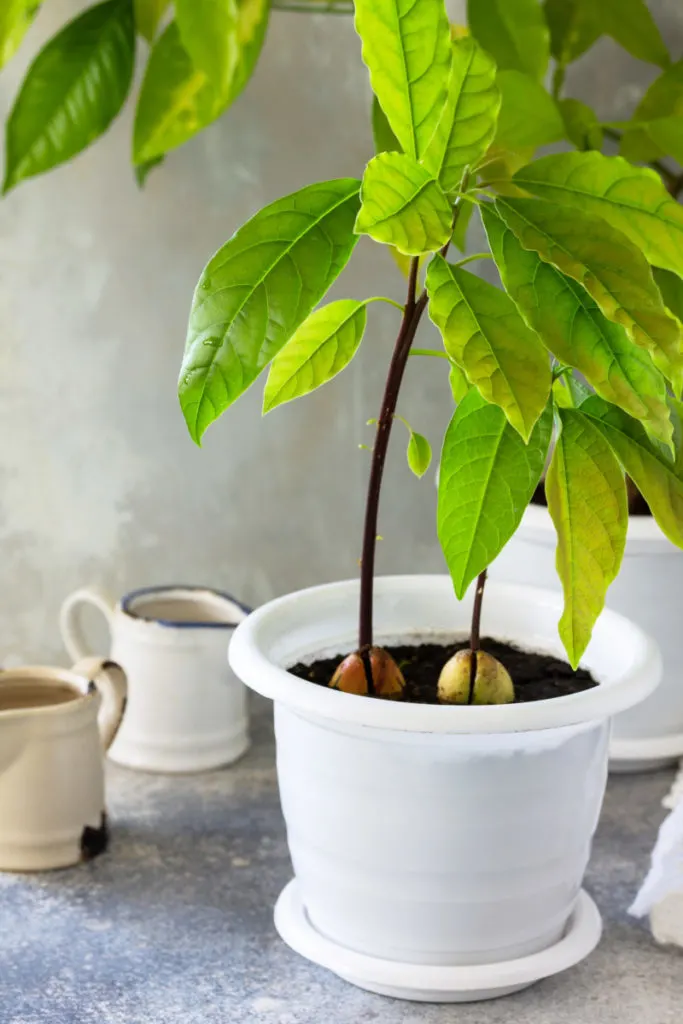
Avocado trees prefer tropical conditions – warm and humid – growing outdoors in USDA Zones 9-11. They need plenty of water, but too much could be detrimental as they are quite susceptible to root rot. Ensure you’ve got rich, well-draining soil for a healthy avocado plant.
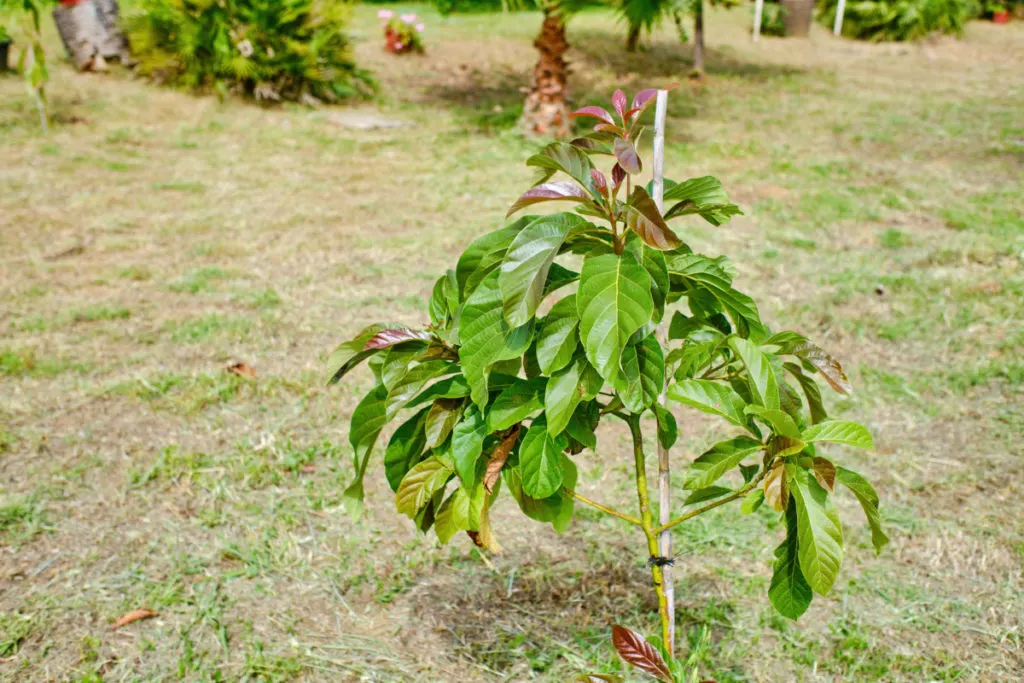
To improve drainage for potted avocado plants, mix coconut husk and perlite into the potting soil. You’ll know you’re overwatering your avocado tree if the leaves begin to yellow. This is also an indication that your tree might not be getting enough sun.
Some avocado tree varieties can survive temperatures below 32F, but not for extended periods. Bring your tree indoors over winter and keep it away from windows at night to prevent damage.
Growing an avocado tree from a seed is a fun and exciting experiment that doubles as a learning experience for you and your family.
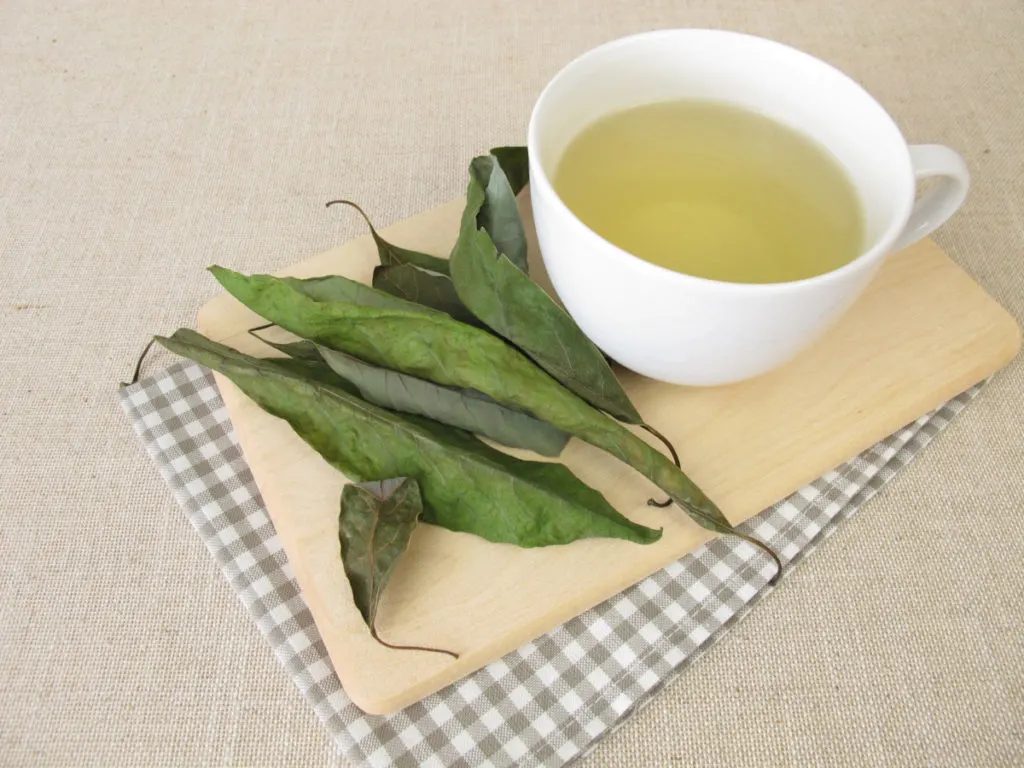
Your funky tree might not produce fruit, but it’s not just an ornamental tree once it’s matured. Its leaves have several uses too. You can make a healthy, immune-boosting tea or use a whole bunch in homey meals like roasts, stews and even as a wrap for steaming fish.
And if you don’t want to use the avocado pit to grow a new tree, there are many more brilliant uses for the avocado seed.

Get the famous Rural Sprout newsletter delivered to your inbox.
Including Sunday musings from our editor, Tracey, as well as “What’s Up Wednesday” our roundup of what’s in season and new article updates and alerts.

